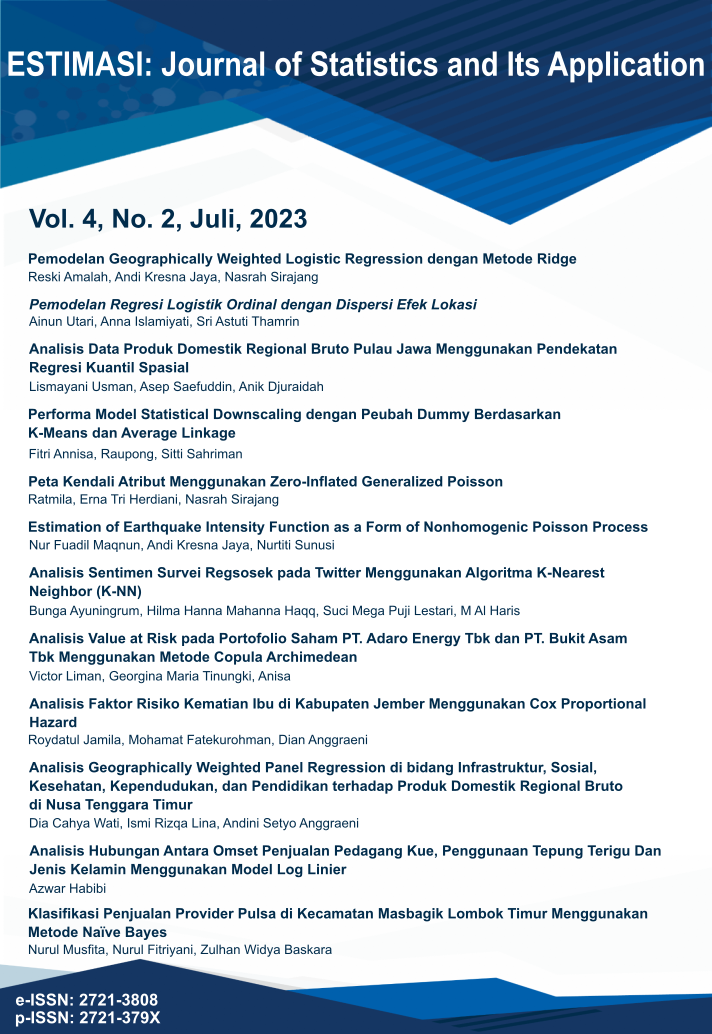Estimation of Earthquake Intensity Function as a Form of Nonhomogenic Poisson Process
DOI:
https://doi.org/10.20956/ejsa.v4i2.18007Keywords:
Earthquakes, Linear Regression, Nonhomogen Poisson ProcessAbstract
Earthquake is a natural phenomenon that is random in nature because its occurrence depends on time so that earthquakes are seen as a Nonhomogeneous Poisson Process. In this study, the Nonhomogeneous Poisson process was applied to estimate the number of earthquakes on the island of Sulawesi. The data used in this study is the occurrence of earthquakes on Sulawesi Island from January 2018 to December 2020 sourced from the Meteorology, Climatology and Geophysics Agency (BMKG) Region IV Makassar. The results of this study indicate that earthquakes that occur from one month to the next do not affect each other other than that the value of the intensity of the earthquake in each interval (month) is not the same, so that the estimated incidence of earthquakes on the island of Sulawesi with a strength of more than 5.0 SR is obtained. on 1 to 8 July 2021 is about 14 earthquakes with a standard deviation of about 3 times and the probability of an earthquake is 0.10537.
References
Abdillah, Analisis keaktifan dan resiko gempa bumi pada zona subduksi daerah pulau sumatra dan sekitarnya dengan metode least square, Jakarta. 2010.
Ikram, A. dan Qamar, U. Mengembangkan sistem pakar berdasarkan aturan asosiasi dan logika predikat untuk prediksi gempa. Syst Berbasis Pengetahuan. vol. 75. 87-103. 2015.
Suryandaru, R. Estimasi Model Terbaik Banyaknya Gempa Bumi Menggunakan Poisson Hidden Markov Models dan Algoritma EM. Jakarta: Universitas Islam Negeri Syarif Hidayatullah. 2015.
Ross, S. Pengantar Model Probabilitas. California: Elsevier. 2007.
Sumiati, I. Application of the Nonhomogeneous Poisson Process for Counting Earthquakes. Bandung : Universitas Padjajaran. 2019.
Downloads
Published
Issue
Section
License
Copyright
It is the author's responsibility to ensure that his or her submitted work does not infringe any existing copyright. Authors should obtain permission to reproduce or adapt copyrighted material and provide evidence of approval upon submitting the final version of a manuscript.


